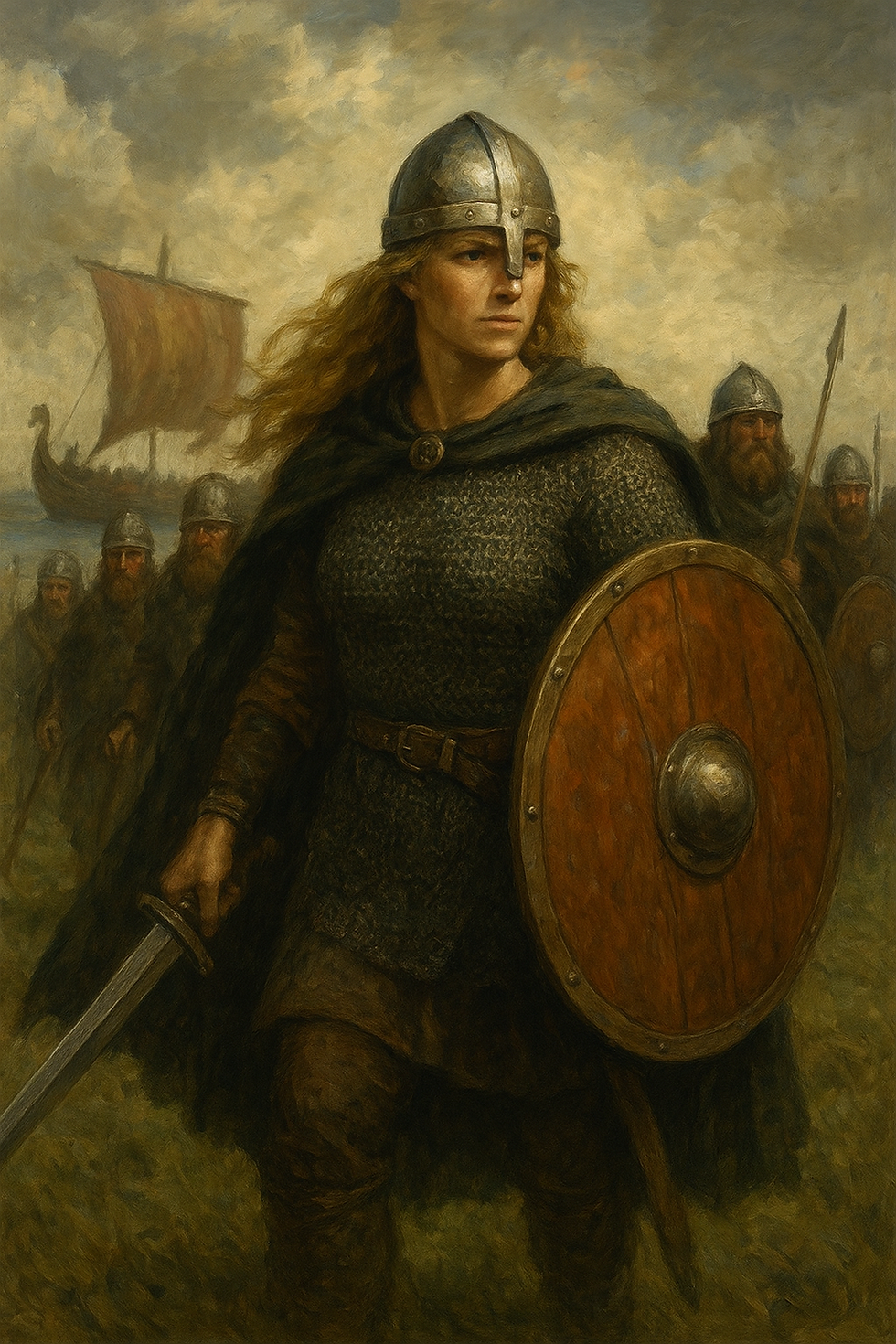Viking Women and the Art of War
- correio_da_historia

- Sep 20
- 2 min read

For centuries, history books have given us a simplified image of the Viking world: rough and fearless men, sailing their longships across stormy seas, wielding axes and swords in search of conquest and glory. But history is rarely confined to stereotypes. Today, thanks to archaeology and historical research, we know that the Viking world was far more diverse — and that women were not confined to silence in their homes or to the shadows of warriors.
Icelandic sagas and skaldic poems tell us of shieldmaidens, women who took up arms and fought alongside men. For a long time, these figures were read as mythical constructions, poetic metaphors of courage and sacrifice. However, in Birka, Sweden, the earth preserved a forgotten truth: a tomb richly equipped with swords, spears, horses, and military strategy pieces belonged, in fact, to a woman. Genetic analysis left no doubt — this warrior had been a commander in life.
This find is not isolated. Other Norse burials have revealed female remains accompanied by weapons and military insignia. Archaeology has thus confirmed what oral tradition had preserved in the form of legend: there were women who fought, who led, who were written into the Viking epic not as marginal figures but as real protagonists.
It is important to understand this reality within Scandinavian society. Among the peoples of the North, women enjoyed rights uncommon in the medieval European context: they could inherit, manage property, and divorce. The step into war, though exceptional, was not forbidden to them. In times of crisis or during risky expeditions, the female armed arm could be not only tolerated but necessary.
This does not mean imagining armies of Valkyries filling the battlefields. Female presence was always a minority. But the myth of the shieldmaidens and the memory of Viking women warriors tell us much about how this civilization understood courage: not as the exclusive attribute of one sex, but as a shared virtue.
Thus, when we revisit its layers, history reveals that Norse bravery wore both the armor of men and that of women. And that, on the edge of Viking swords, was inscribed not only the strength of a people, but also the freedom of those who dared to break social boundaries.
Paulo Freitas do Amaral
Professor, Historian and Author





Comments